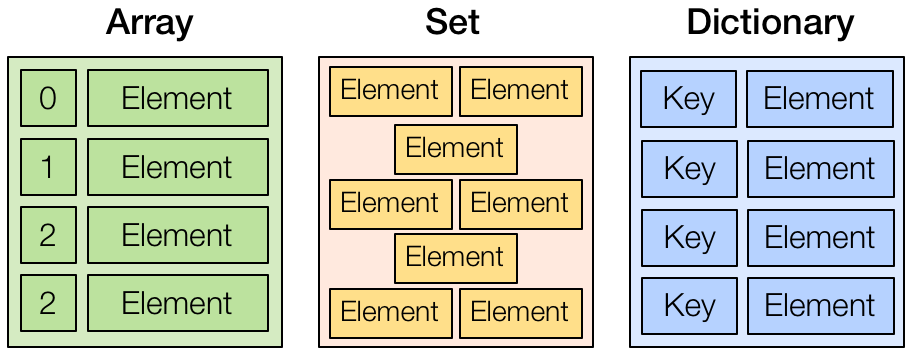So far in this book, we have learned about many different Swift constructs: classes, structs, enums, closures, protocols, and tuples. However, it is rare to deal with just one instance of these on their own. Often, we will have many of these constructs, and we need a way to collect multiple instances and place them in useful data structures. Over the next few recipes, we will examine three collection data structures provided by Swift; that is, arrays, sets, and dictionaries (dictionaries are often called hash tables in other programming languages):

Figure 2.1 – Collection of data structures
While doing this, we will look at how to use them to store and access information, and then examine their relative characteristics.




































































